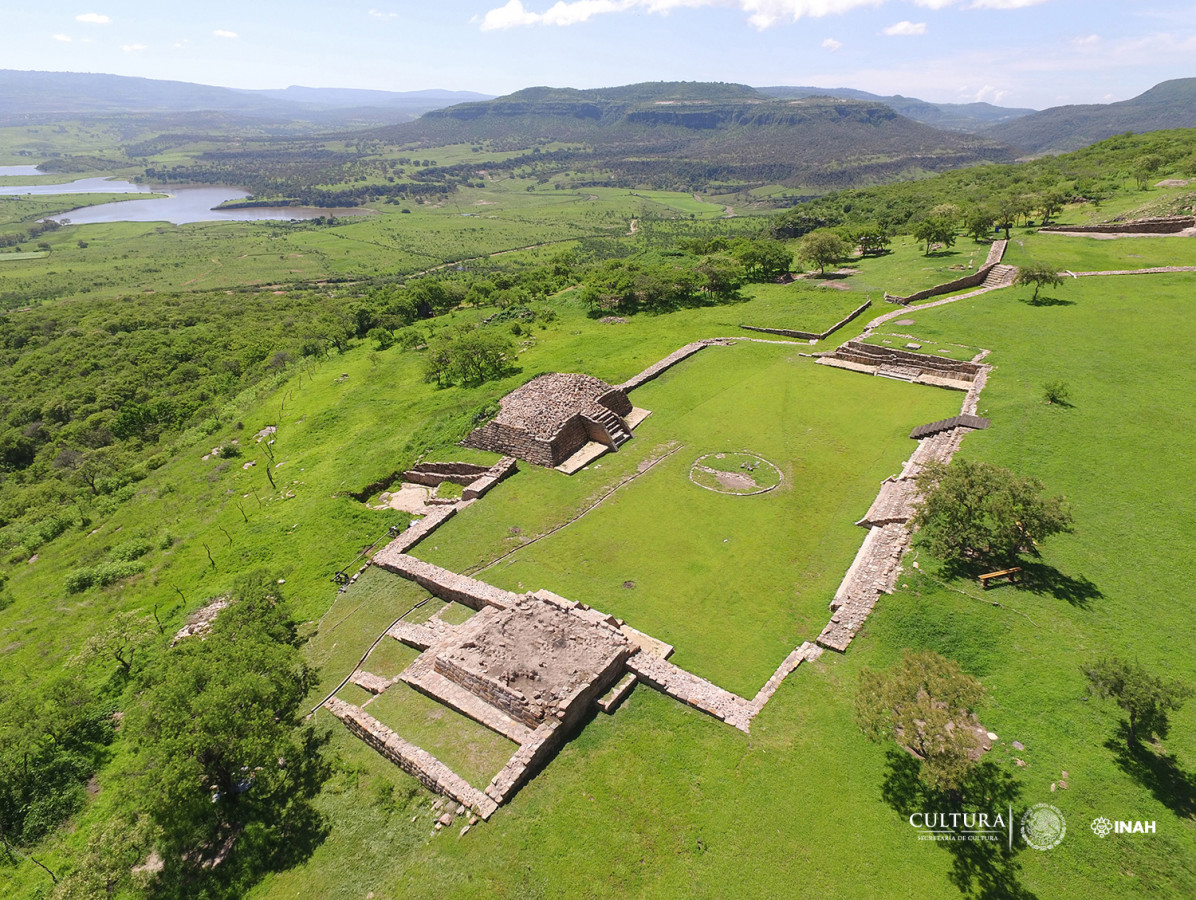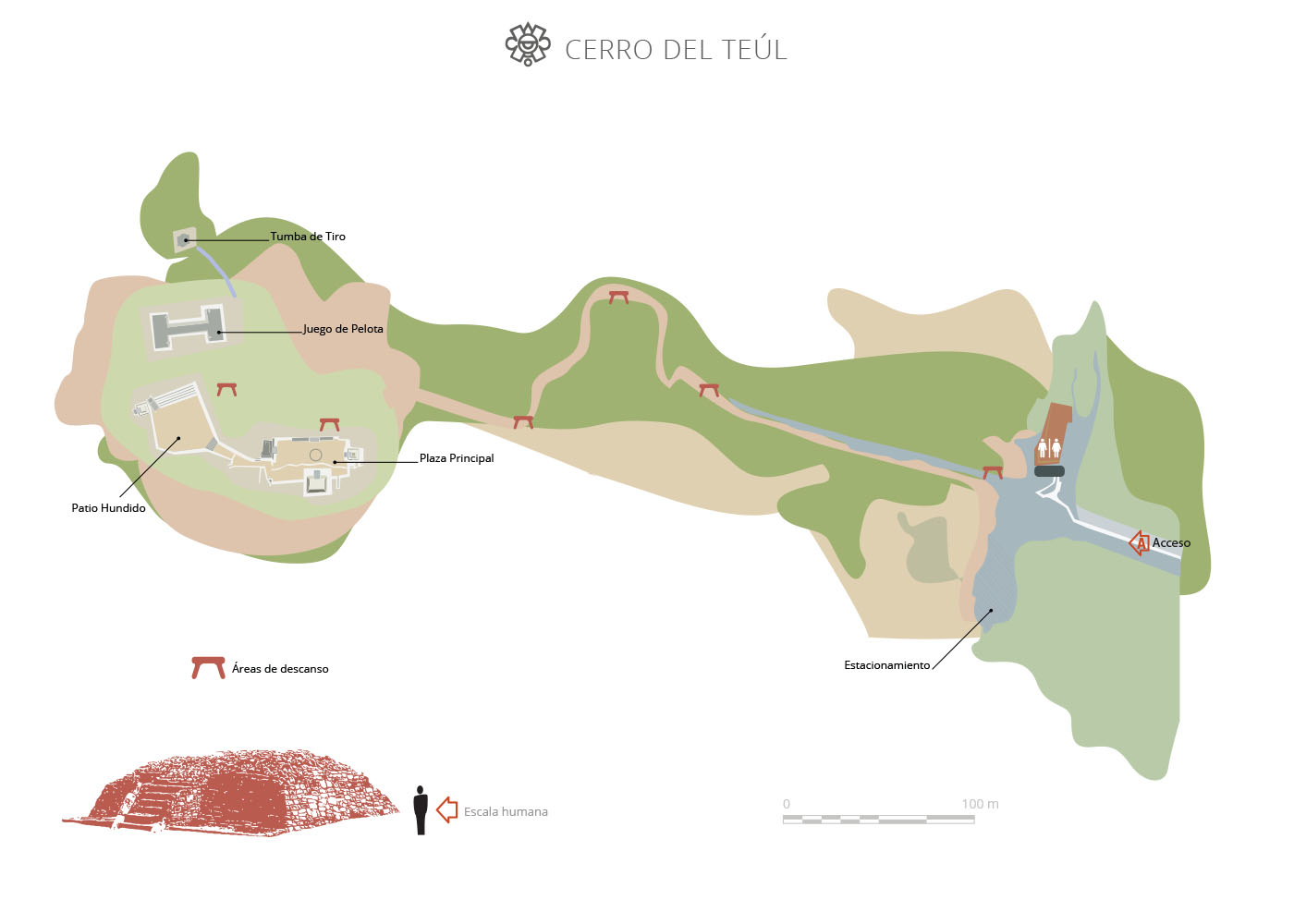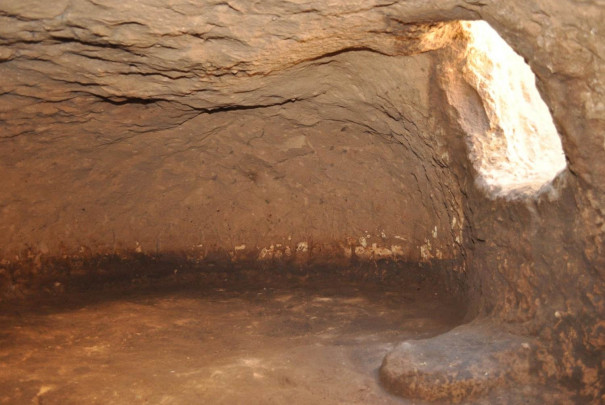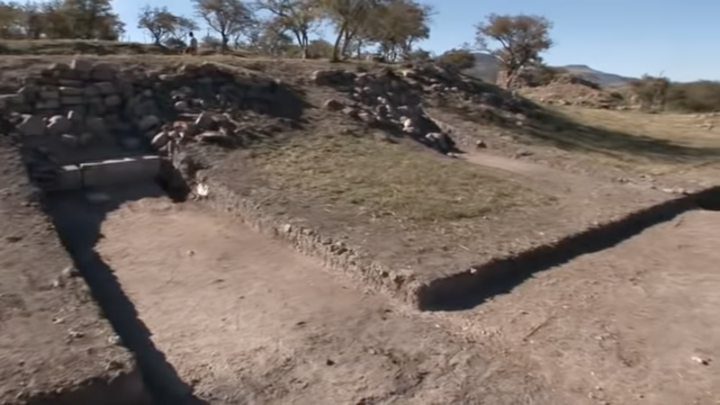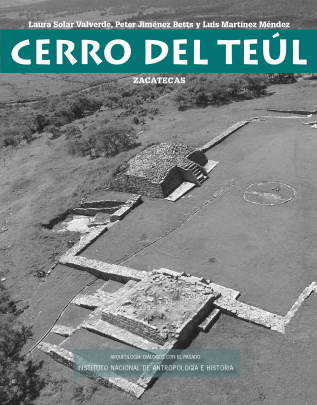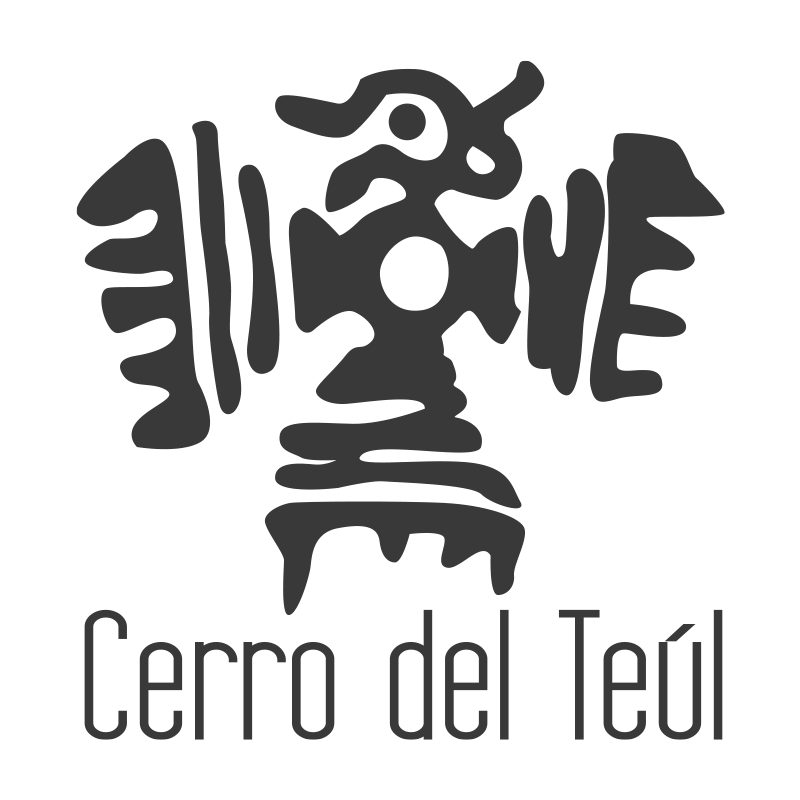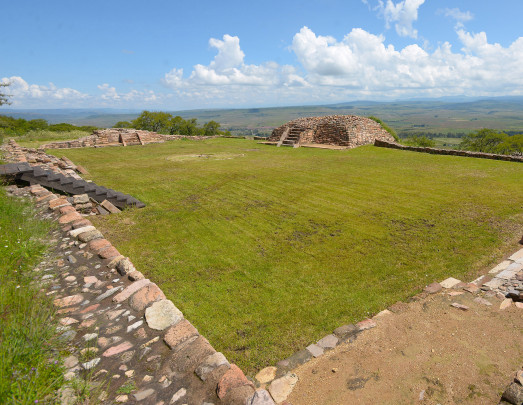Cerro del Teúl
Archeologists discovered the first signs of settlement in the state of Zacatecas on the top of a hill. The site was occupied for more than 1,600 years without interruption. The techniques used in the buildings point to great expertise in hydraulic engineering and the skillful use of the natural shape of the land.
About the site
The valley of Tlaltenango, nestling in the foothills of the Sierra Madre Occidental, was the site of longstanding human settlement in pre-Hispanic times. One of the principal ceremonial centers of the south of Zacatecas was built on the Cerro del Teúl, at the southern end of the valley. The region is culturally and geographically an extension of the Occidente mountain range, which is why the site shares many material culture traits with the societies that developed in the present-day states of Jalisco and Nayarit
The Cerro was formed through volcanic action millions of years ago, and was subsequently shaped by the movement of tectonic plates and erosion processes. Its peculiar profile, as well as the presence of springs on the middle plateau, favored the construction of architectural spaces for ritual use and public events, where the ancient inhabitants of Teúl celebrated mythical events and worshiped their gods.
Excavations of the Cerro del Teúl have confirmed that the first period of settlement in the state of Zacatecas took place approximately 1,000 years ago, at the dawn of the modern period. The inhabitants of Teúl at that time were farmers and they employed the shaft tomb funerary practice. Some of these underground tombs located near the ceremonial center have unfortunately been looted. Nevertheless, the material left behind by these sacrilegious acts has provided information on the articles used as offerings, most notably elaborate ornaments made from shell, slate and green-blue stones, as well as clay pots and sculptures. These objects reflect the existence of long-distance trade networks from the earliest times, and the adoption of beliefs founded on the fertility of the earth and the idea of the underworld.
The first ceremonial center on the northeastern edge of the Cerro was laid out around the seventh century AD. A few centuries later there was an episode of collective renewal, after which a few originally isolated buildings were incorporated into a circuit connecting the different architectural complexes to each other. These modifications are representative of the site’s peak period, between the tenth and thirteenth centuries AD.
When Nuño de Guzmán’s army arrived in the region on its campaign of conquest, they found the Cerro del Teúl ceremonial center in full operation as a site of worship. As a result of the invasion the ancient settlement was burnt, destroyed and abandoned, such that the period of pre-Hispanic occupation lasted from the early centuries AD to the sixteenth century.
The Cerro was formed through volcanic action millions of years ago, and was subsequently shaped by the movement of tectonic plates and erosion processes. Its peculiar profile, as well as the presence of springs on the middle plateau, favored the construction of architectural spaces for ritual use and public events, where the ancient inhabitants of Teúl celebrated mythical events and worshiped their gods.
Excavations of the Cerro del Teúl have confirmed that the first period of settlement in the state of Zacatecas took place approximately 1,000 years ago, at the dawn of the modern period. The inhabitants of Teúl at that time were farmers and they employed the shaft tomb funerary practice. Some of these underground tombs located near the ceremonial center have unfortunately been looted. Nevertheless, the material left behind by these sacrilegious acts has provided information on the articles used as offerings, most notably elaborate ornaments made from shell, slate and green-blue stones, as well as clay pots and sculptures. These objects reflect the existence of long-distance trade networks from the earliest times, and the adoption of beliefs founded on the fertility of the earth and the idea of the underworld.
The first ceremonial center on the northeastern edge of the Cerro was laid out around the seventh century AD. A few centuries later there was an episode of collective renewal, after which a few originally isolated buildings were incorporated into a circuit connecting the different architectural complexes to each other. These modifications are representative of the site’s peak period, between the tenth and thirteenth centuries AD.
When Nuño de Guzmán’s army arrived in the region on its campaign of conquest, they found the Cerro del Teúl ceremonial center in full operation as a site of worship. As a result of the invasion the ancient settlement was burnt, destroyed and abandoned, such that the period of pre-Hispanic occupation lasted from the early centuries AD to the sixteenth century.
ca. 200 aC.- 1530 d.C.
Preclásico tardío a momento del contacto
900-1350 d.C.
Postclásico temprano y medio
Map
Practical information
Tuesday to Sunday from 09:00 to 17:00 hrs. Last entry 16:00 hrs.
Free entry
La zona arqueológica se localiza en el extremo sur de la cabecera municipal de Teúl de González Ortega
The town of Teúl can be reached easily from three state capitals: Zacatecas, Guadalajara and Aguascalientes. Access is via the north-south Federal Highway 23, which connects the cities of Zacatecas and Guadalajara. Teúl is 135 miles south of the former and 75 miles north of the latter. To reach Federal Highway 23 from Aguascalientes, it is necessary to drive first to the town of Jalpa, Zacatecas, and from there continue over the Sierra Morones range to the city of Tlaltenango, also in Zacatecas.
Services
-
This email address is being protected from spambots. You need JavaScript enabled to view it.
-
FACEBOOK
Directory
Responsable
Arqlgo. Luis Octavio Martínez
This email address is being protected from spambots. You need JavaScript enabled to view it.
Responsable
Arqlga. Laura Solar Valverde
This email address is being protected from spambots. You need JavaScript enabled to view it.

